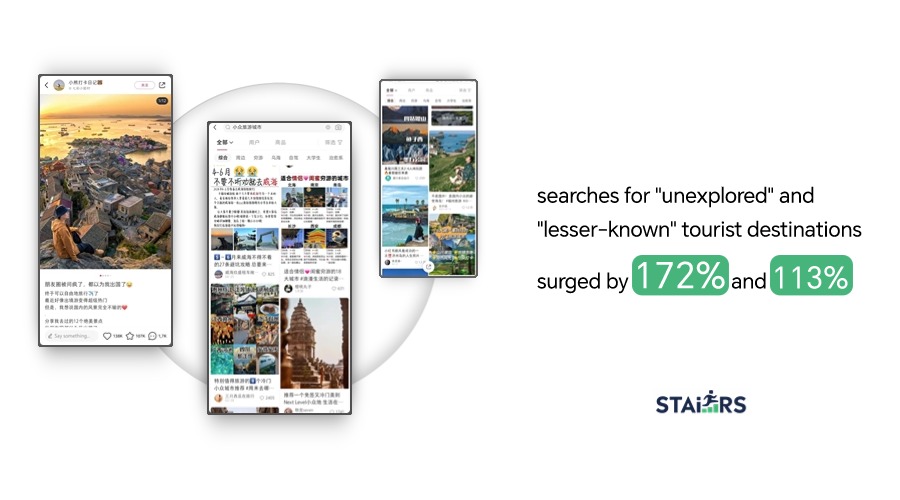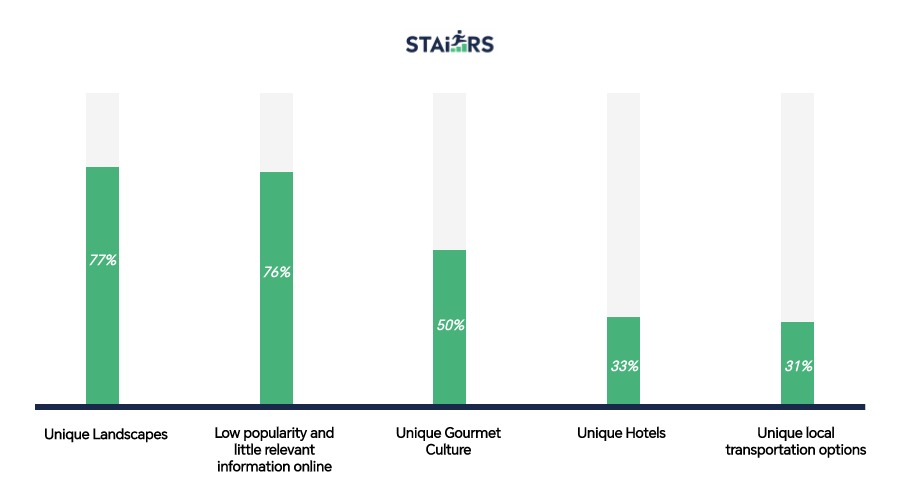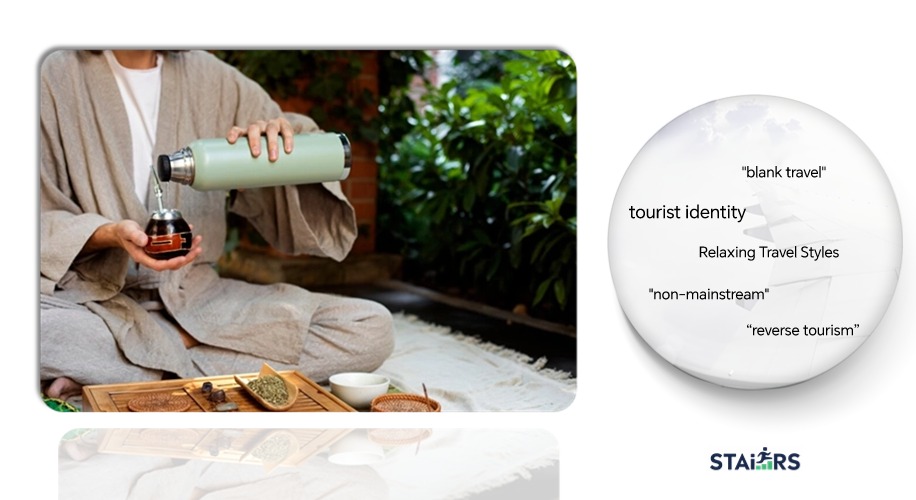The China tourism market is experiencing a notable recovery from 2023 to 2024 with significant changes in Chinese tourists’ travel preferences.
The Chinese Tourism Market in 2024
During the 2024 Labor Day holiday, the Chinese tourism market showed consistent growth. According to Trip.com Group’s data, Chinese tourists spent a total of 1668.9 billion yuan (around 213.7 billion euros) on traveling, a 12.7% increase compared with that of the previous year and a rise of 13.5% from 2019.
Changes in the travel preferences of Chinese tourists are emerging. The growth rate of inbound and outbound travel exceeds that of domestic travel, and the growth rate in emerging markets outpaces that of first- and second-tier cities.
An Expansion Project in China? We Can Help You!
Preference of Chinese Tourists
1. Niche Destinations for young tourists
Reversing the trend of tourists flocking to popular cities and attractions in the past, nowadays China’s tourism market has been driven by young people who desire personalized and unique experiences.

During the 2023 Labour Day holiday, webcitizen searches for ‘unexplored’ and ‘ lesser-known’ tourist destinations surged by 172% and 113% respectively. The Top 5 ‘’niche‘’ destinations during the 2024 Labour Day holiday were Chongzuo in Guangxi, Liangshan in Sichuan, Baoshan in Yunnan, Chenzhou in Hunan, and Taizhou in Jiangsu.
The “reverse tourism” trend, where tourists choose less populated and more beautiful destinations, has continued to gain momentum.

2. Relaxation of Chinese Tourism
Traveling for Chinese people is not just about sightseeing anymore; it’s more about emotional satisfaction. Chinese travelers no longer care about how many scenic sites they can visit in a day. Traveling away from their residences is becoming a way for Chinese consumers to relax and rejuvenate.
Compared to 2019, in 2023, travelers tended to seek a more peaceful and relaxed environment during their journeys, giving themselves a “spa” for the soul.
Consumers who are more concerned about whether they can relax during their travels may have vastly different travel plans. Some may be fine with just resting in a hotel all day, unwinding as time goes by. Others may choose to explore nature, releasing life & work stresses. Whether staying in a hotel, relaxing in nature, or visiting scenic sites actively, traveling means having fun to the fullest and the best cure for life.
3. Surprise of Chinese Tourism
Compared to meticulously planned “checklist-style” travel itineraries, Chinese travelers now prefer to enjoy the journey itself. They don’t overly anticipate their trips or dictate what they must do or where they must go anymore. They look forward to unexpected delights during their journeys, unlocking unknown “easter eggs.”
In recent years, Chinese tourists have shifted their focus from ticking off numerous attractions to savoring a more leisurely and enjoyable travel experience. Compared to 2019, nearly two-thirds of Chinese travelers hope their itineraries are more flexible. Experiencing unplanned activities during the journey makes it more memorable.
“I don’t want a well-planned route. I prefer to wander around casually rather than following the touristy paths that everyone else takes. For example, on this trip, we stumbled upon an unknown mountain, sat in a tea house for two hours, chatting with the owner about tea, and it made us very happy.” A Chinese traveler shared their experience of ” travel at will.”
4. Immersive Experience of Chinese Tourism…
For today’s Chinese travelers, the core of travel is to live like locals.
More and more Chinese travelers hope to engage in more localized activities and care more about experiencing genuine local customs and cultural life.
Chinese consumers aspire to immerse themselves in the lives of locals, shedding their tourist identity and experiencing life completely different from their own living environment. This expectation surpasses considerations such as scenic attractions, dining, and accommodation.

Outbound Travel from China
During the 2024 Labor Day holiday, the total number of inbound and outbound tourists reached 3.672 million, including 1.775 million inbound tourists and 1.897 million outbound tourists. During the Labor Day holiday, the number of foreigners traveling to China even exceeded the number of Chinese people traveling abroad.
Have Chinese People Given Up on Traveling Abroad?
No. Although domestic travel is the major trend in the Chinese tourism market, the growth rate of inbound and outbound travel still exceeds that of domestic travel.
During the 2024 May Day holiday, Chinese tourists traveled to nearly 200 countries and over 3,000 towns globally. The Hong Kong and Macau regions, as well as Southeast Asia, Japan, and South Korea, are popular short-haul destinations, while long-haul destinations mainly include the United States, Australia, and the United Kingdom.
The whole world is looking forward to greeting Chinese tourists. French Prime Minister Gabriel Attal convened a tourism committee on the 2024 May Day holiday. The aim is to attract more Chinese tourists during the Paris Olympics. The French will streamline visa-applying procedures as a means of attracting Chinese tourists and stimulating growth in the tourism industry.
Conclusion
Significant changes are happening in Chinese travel trends. 2023 marked the end of a difficult period for the Chinese tourism industry, and 2024 signifies a promising recovery. Chinese travelers now prefer to explore off-the-beaten-path destinations, adopt relaxing travel styles, and continue to show interest in international travel.
If you want to learn more about the Chinese tourism market, don’t hesitate to contact STAiiRS. The STAiiRS professional international digital marketing team will provide you with detailed answers.


Recent Comments